AI is revolutionizing various facets of our lives, impacting both work and personal spheres. SGE, being no exception, is witnessing significant transformations due to the rise of AI technology. With the rapid integration of AI into search engines, such as Microsoft’s Bing incorporating AI capabilities and Google’s development of the Google Search Generative Experience (SGE), the landscape of SEO is undergoing profound changes.
Google’s SGE initiative aims to leverage AI to enhance the search experience, offering users more personalized and relevant results. However, there is speculation surrounding the status and future of SGE. Some rumors suggest that Google may halt or alter its SGE project, while others anticipate its full-scale implementation in the near future.
As AI continues to advance, its impact on SEO will become increasingly pronounced. Businesses and marketers need to stay abreast of these developments to adapt their strategies effectively and capitalize on the evolving search landscape.
What is Google’s SGE?
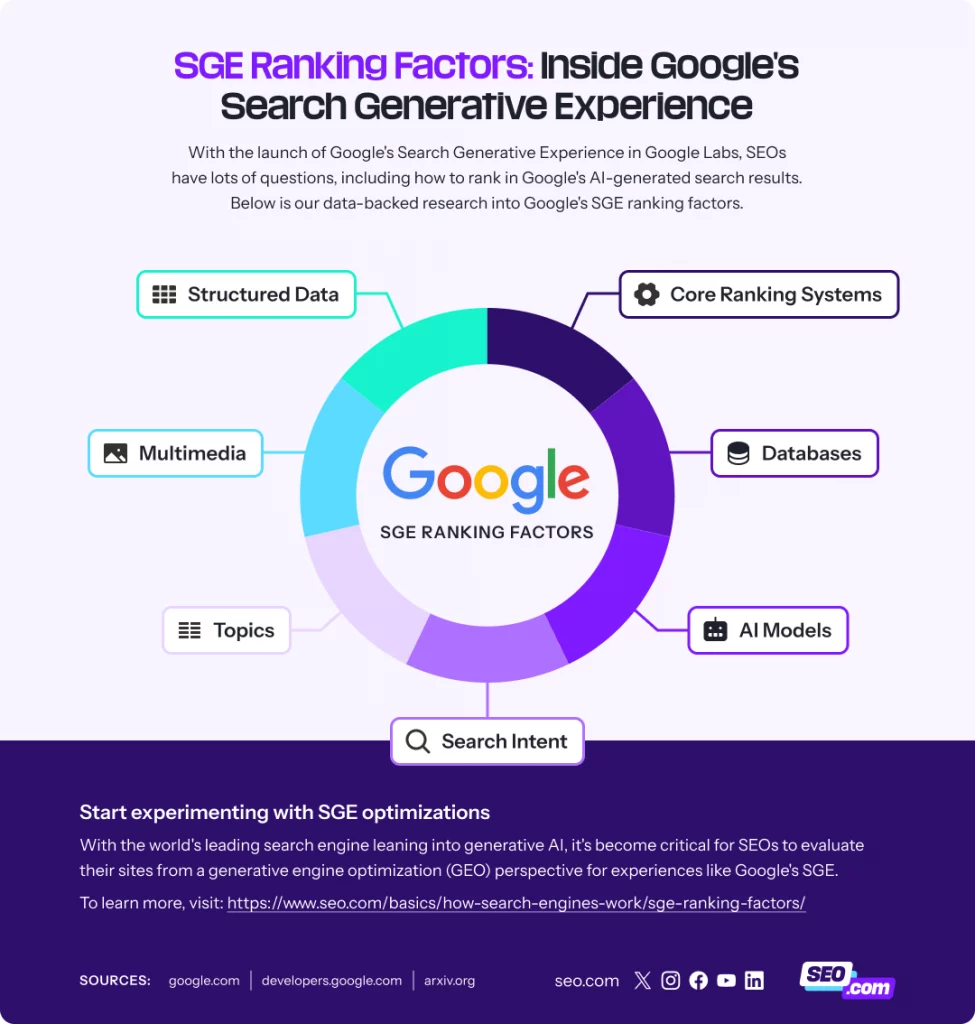
Google’s Search Generative Experience (SGE) is a pioneering project that introduces generative AI technology into the realm of search. It stands as a part of Google Labs, an initiative dedicated to testing and refining innovative technologies aimed at enhancing various Google products like Search, Photos, Google Home, and Google Workspaces. The primary objective is to push the boundaries of Google’s flagship product, the search engine, by creating a more immersive and personalized search experience for users.
How Far Along is SGE?
Despite being in an experimental phase, users can actively engage with SGE and conduct searches on Google. Initially, the SGE experiment was slated to conclude in December 2023, as indicated on the Google Labs website. However, a recent update to the landing page removed the experiment’s end date, sparking curiosity about its future trajectory. While there is speculation surrounding the potential release or discontinuation of SGE, concrete details remain elusive.
Is Google Stopping SGE?
Rumors have circulated suggesting that Google may be halting the SGE project. These speculations stem from a statement by Elizabeth Reid, VP of Search at Google, in a blog post announcing new AI-powered features. Reid’s mention of SGE as a “testbed for bold new ideas” ignited debate and conjecture about the project’s fate. Despite interpretations suggesting possible cessation, Google has not officially confirmed any such action.
Furthermore, empirical data and statements from Google executives indicate ongoing support for SGE. Authoritas’ research indicates that SGE results appear in 86% of search queries, suggesting continued investment in the project. Sundar Pichai, CEO of Google’s parent company Alphabet, expressed satisfaction with user feedback on SGE during earnings calls and highlighted ongoing experimentation with the technology. Integrating Gemini, Google’s ChatGPT competitor, into SGE has shown promising results, with significant latency reduction observed in early stages.
In conclusion, while there has been speculation regarding the discontinuation of SGE, current evidence suggests that Google remains committed to the project. Ongoing efforts aim to integrate it seamlessly into Search while optimizing user experience and preserving key revenue streams, such as Google Ads.
1. Changes in SERP Layout:
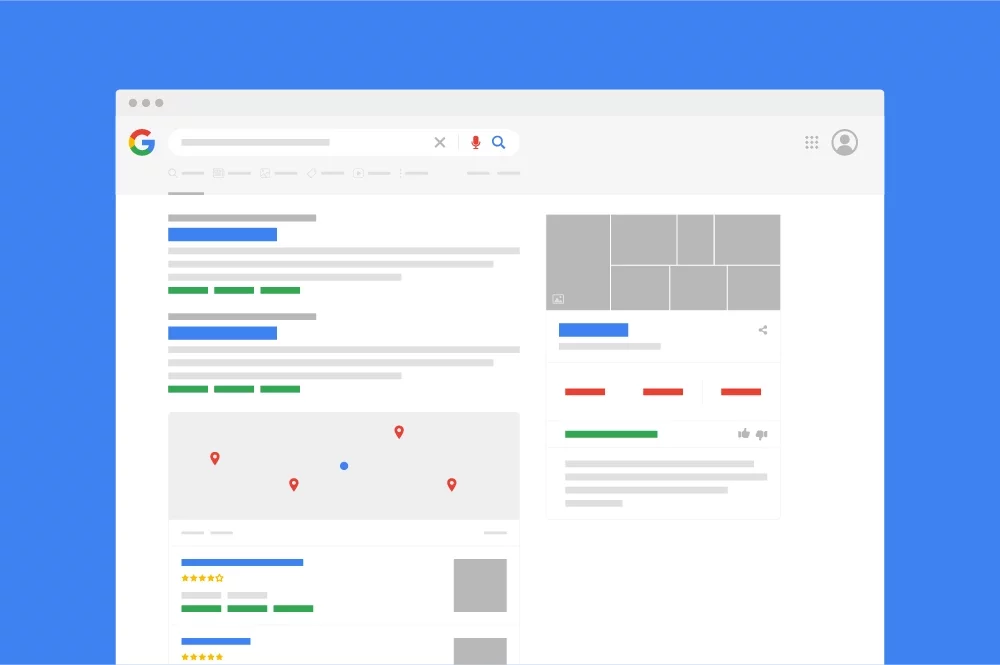
SGE is poised to revolutionize the SERP layout by integrating AI-generated overviews more prominently.
- Key Features:
- AI-generated summaries may occupy significant space on SERPs, potentially altering the traditional format.
- Enhanced emphasis on visually engaging elements and keyword relevance to optimize content for SGE overviews.
- Content creators must adapt strategies to ensure visibility amidst the evolving SERP dynamics driven by AI-generated content.
2. Lower Click-Through Rates (CTR):
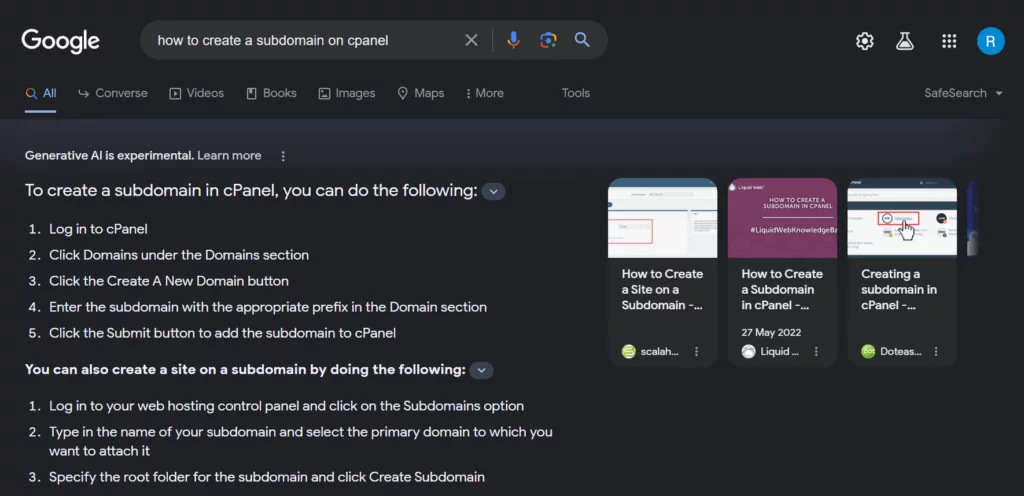
With the increased prominence of SGE-generated overviews, a decline in organic CTR is anticipated.
- Key Features:
- Immediate access to summarized answers on SERPs may diminish user engagement with traditional organic results.
- Businesses may experience a reduction in organic traffic, particularly for informational queries, necessitating strategic adjustments in content optimization.
- Preparation for potential challenges in driving traffic through organic search becomes crucial for businesses.
3. Transactional Search Experience:

SGE has the potential to facilitate transactional activities directly within search results, streamlining the user experience.
- Key Features:
- Users may execute tasks or complete transactions without navigating to individual websites, transforming the search experience.
- The streamlined process may impact CTR, especially for queries requiring specific actions or transactions.
- Businesses need to anticipate shifts in user behavior and align their digital marketing strategies accordingly.
4. Adjusting Content Strategy:
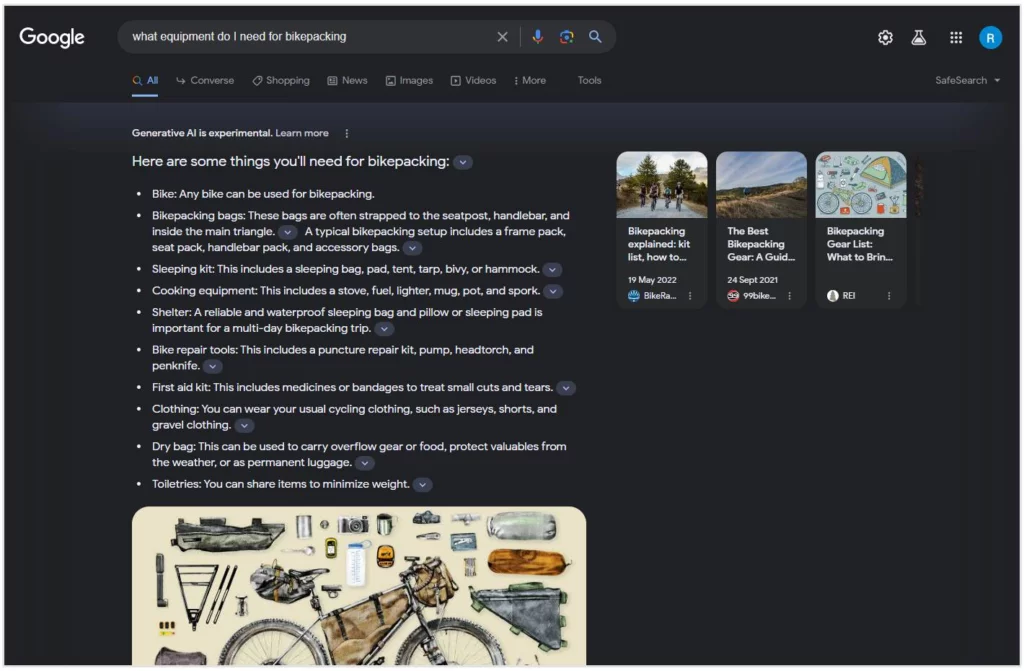
Content strategy must evolve to accommodate changing search behaviors and optimize for enhanced SERP features.
- Key Features:
- Integration of summarized answers to common queries at the top of content pages enhances visibility in SGE overviews.
- Prioritization of user intent and delivery of value-driven content are critical to meeting evolving search demands.
- Continuous adaptation and experimentation are essential to navigate the evolving SEO landscape effectively.
Best Practices to Enhance Google SGE:
1. Keep Prioritizing Local SEO
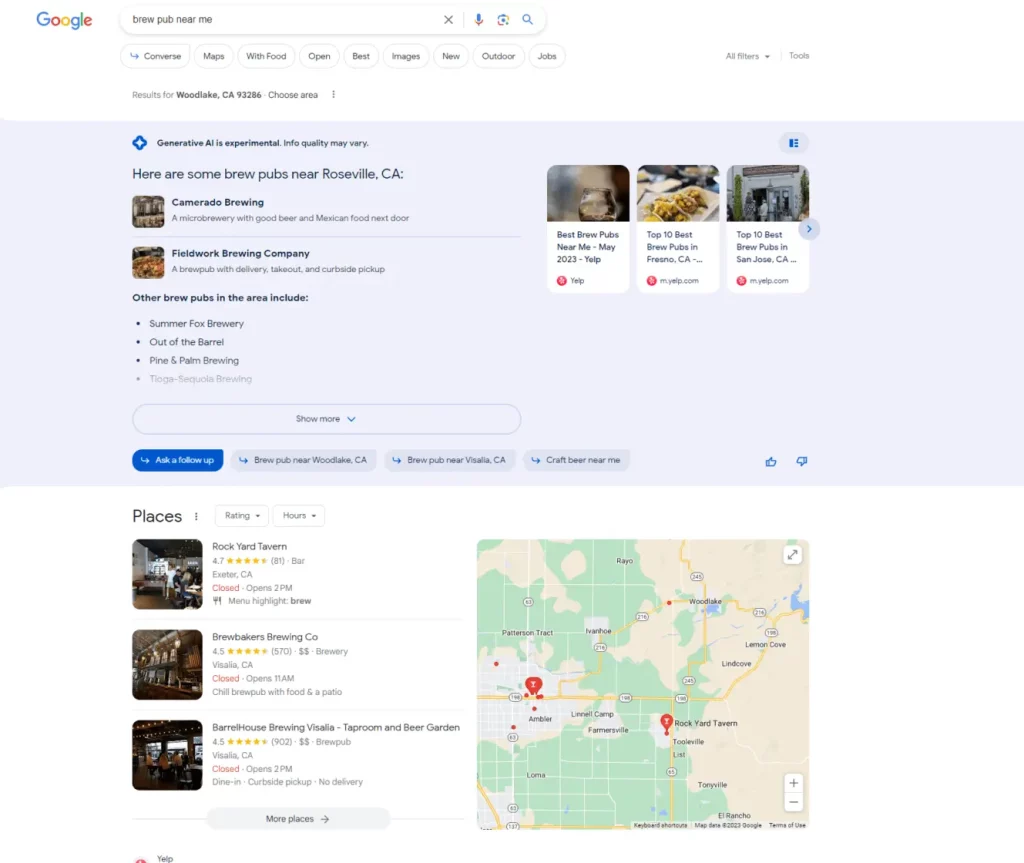
Businesses featured in SGE snapshots prioritize local search engine optimization. Therefore, it’s essential to continue investing in local SEO strategies, such as claiming local listings, enhancing on-site location content, and cultivating online reviews.
Additionally, maintain your investment in traditional search engine optimization. Websites with robust SEO practices are frequently showcased in Search Generative Experience snapshots, underscoring the importance of ongoing SEO efforts.
When discussing SGE and its impact on existing performance metrics, emphasize the significance of both traditional and local SEO in maximizing potential organic traffic. This ensures that leadership understands the enduring value and critical role of SEO in business growth.
2. Claim Your Local Listings
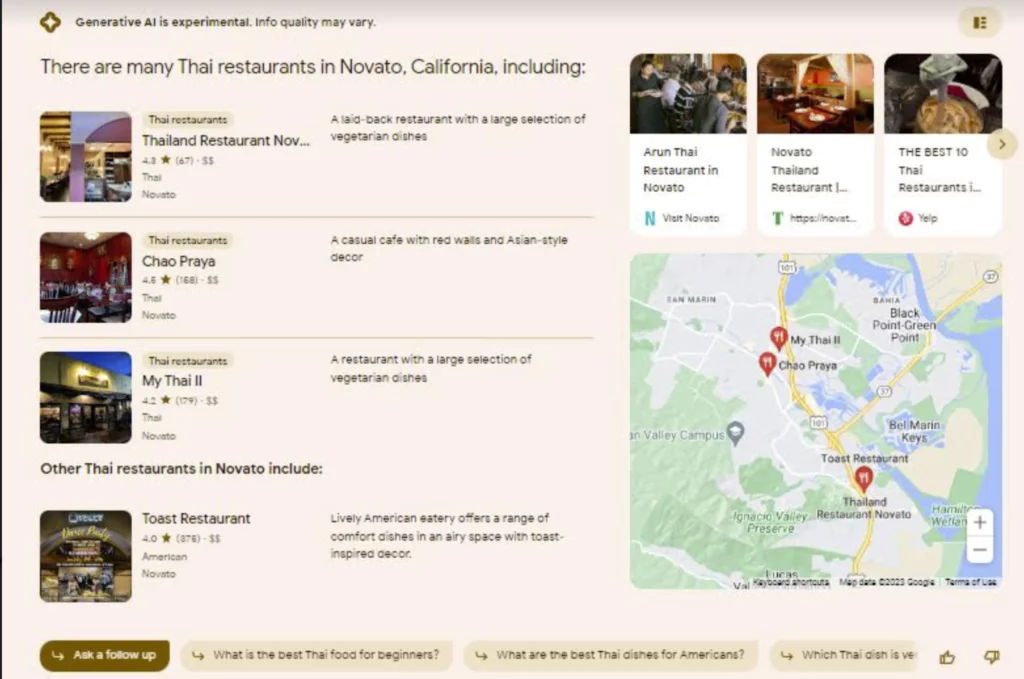
While claiming local listings is part of local search engine optimization, it’s crucial to highlight its value in optimizing for local generative results. Many location-based snapshots feature a carousel akin to the local 3-pack.
Ensure to claim various local listings, including:
- Google Business Profile
- Apple Maps
- Bing Places
Optimize these listings by providing comprehensive and accurate information, such as:
- Name
- Address
- Phone number
- Business hours
- Products or services offered
This information aids Google in understanding your business and its offerings, improving your chances of appearing in long-tail search results, such as “24-hour emergency plumber near me.”
Regularly update your listings to maintain accuracy, and consider utilizing local listing management software for streamlined management.
3. Secure a Google Knowledge Panel

Google Knowledge Graph, along with Google Shopping Graph, serves as a reference for Search Generative Experience when generating these snapshots. Gaining a Google Knowledge Panel is the gateway to inclusion in the Knowledge Graph, which encompasses information about individuals, locations, and entities.
Obtaining a Google Knowledge Panel necessitates time as it entails Google recognizing your business as a distinct entity. Common strategies for achieving this include crafting a comprehensive “About Us” page (which also benefits SGE snapshots), establishing a reputable backlink portfolio, and implementing Organization markup.
4. Enhance Your Google Business Profile

Optimizing your Google Business Profile is paramount for effective local experience optimization. Since many location-based SGE snapshots utilize and link to Google Business Profiles, going beyond basic local listing optimizations is crucial.
Consider additional enhancements such as:
- Incorporating images showcasing your establishment, team, and work
- Providing a repository of frequently asked questions and answers
- Establishing a Google Posts calendar for holidays, promotions, and other announcements
- Selecting relevant categories for your Google Business Profile
- Offering supplementary details like parking availability and holiday hours
Furthermore, you may contemplate enabling online appointment scheduling or messaging options. However, if your team cannot accommodate these features, it’s advisable to refrain from offering them to prevent user dissatisfaction.
5. Adding Products or Services to Google Business Profile

When optimizing your Google Business Profile, it’s crucial to include detailed information about the products or services your business offers. While this falls under the umbrella of Google Business Profile optimization, it merits special attention due to its significance in providing Google with valuable insights into your business capabilities, subsequently influencing snapshots.
By listing your products or services on your Google Business Profile, you provide potential customers with essential information such as:
- Offerings: Clearly outline the products or services you provide, ensuring accuracy and specificity.
- Prices: Transparency regarding pricing can help potential customers make informed decisions.
- Availability: Indicate the availability of your products or services, whether it’s 24/7 availability for emergency services or specific operating hours for regular services.
These details are particularly beneficial for long-tail searches, where users may include specific requirements or preferences in their search queries. For instance, a user searching for a “24-hour emergency plumber for a broken toilet” expects to find immediate assistance and relevant information in the search results.
In SGE snapshots, information extracted from your products or services listings can be prominently featured, addressing specific user queries and needs. For example, in a plumbing-related SGE snapshot, details such as “can fix toilet issues” and “dispatches quickly for toilet overflow” may be highlighted based on the products or services you’ve listed.
Additionally, when uploading images of your products or services, ensure that they accurately represent the offerings. For instance, if you’re a plumbing service, including images of toilets or plumbing fixtures can enhance the relevance and effectiveness of your listing.
6. Utilize LocalBusiness Markup
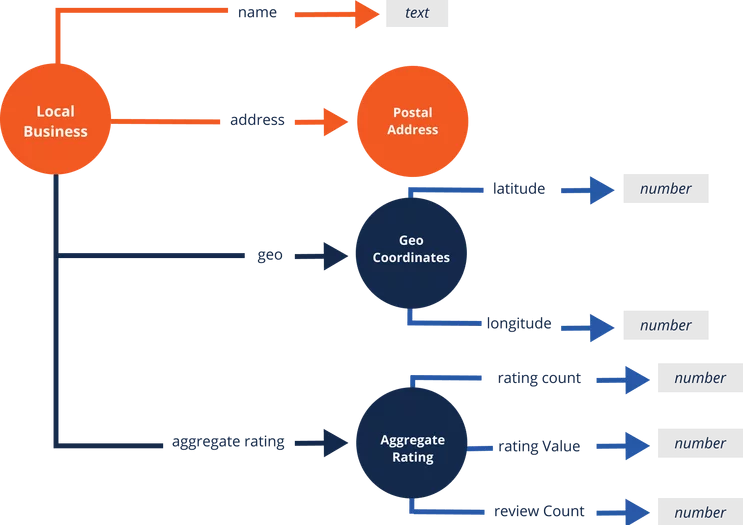
Implementing LocalBusiness markup is another powerful strategy for optimizing your business’s visibility in local searches and enhancing its presence in snapshots. LocalBusiness markup provides AI models, such as those powering Search Generative Experience, with structured data about your business, including its name, address, phone number, and other pertinent details.
By incorporating LocalBusiness markup on your website, you provide search engines with standardized information, making it easier for them to understand and index your business information accurately. This structured data not only improves the visibility of your business in local search results but also enhances its relevance and credibility, increasing the likelihood of being featured in these snapshots for relevant queries.
7. Grow social media presence
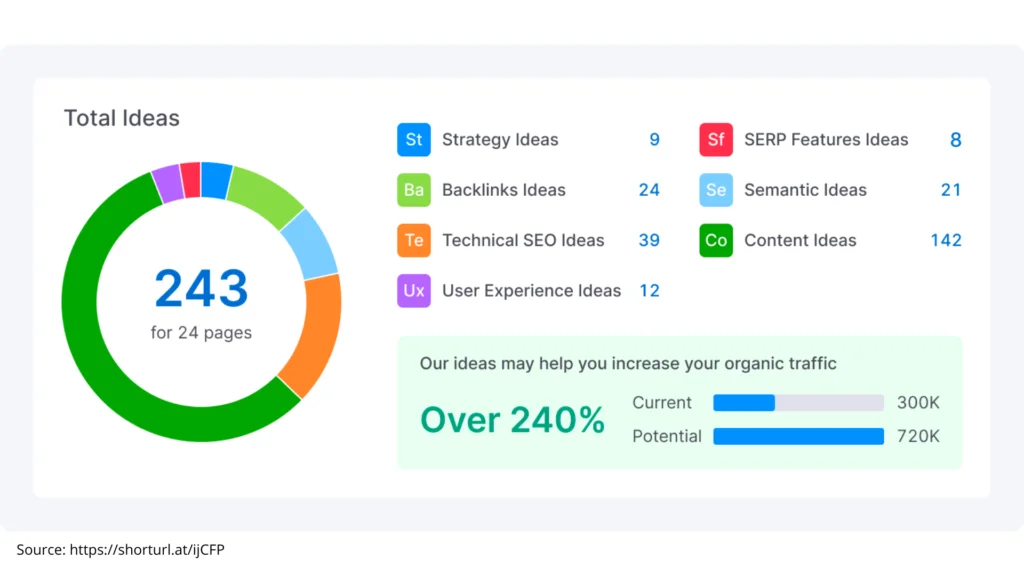
Growing online reviews is paramount for enhancing both local SEO and local SGE optimization. Reviews play a pivotal role in shaping the perception of your business, as they often serve as a primary source of information for potential customers. In local-based snapshots, information extracted from reviews can significantly influence the user’s decision-making process.
When soliciting online reviews, prioritize quality over quantity. Reviews that offer detailed insights into the customer experience, such as the friendliness and professionalism of your team, carry more weight in SGE optimization. Highlighting specific attributes mentioned in reviews, such as the technicians’ knowledge or punctuality, can enrich the content of SGE snapshots and provide valuable context for users.
To encourage customers to leave reviews, leverage both physical and digital channels:
- Physical Materials: Include prompts for leaving reviews on business cards or receipts handed out to customers. These tangible reminders serve as gentle encouragements for customers to share their feedback.
- Digital Materials: Incorporate review requests into digital communication channels, such as email signatures or newsletters. Including a brief message inviting customers to share their experiences can prompt them to leave reviews conveniently.
However, it’s essential to adhere to Google’s policies regarding review incentives. While incentivizing reviews for Google Business Profile is prohibited, you can still encourage customers to leave honest feedback without offering any form of compensation. Transparency and authenticity in reviews are paramount for maintaining credibility and trustworthiness.
Learn more here.
Factors that Determine Your SGE:
Several factors influence your rankings in Search Generative Experience. Understanding these elements is crucial for optimizing your content and improving your visibility in Google search results. Here’s a detailed overview of what determines SGE rankings:
- AI Models: Google employs advanced AI models, such as Gemini, to generate AI-powered snapshots for SGE. These models analyze various data points to understand user intent and provide relevant information in snapshots.
- Core Ranking Systems for Google Search: SGE rankings are influenced by Google’s core ranking systems used for traditional search results. These systems evaluate factors like content quality, relevance, and authority to determine the ranking of web pages.
- Databases: SGE references databases like Google Knowledge Graph and Google Shopping Graph to gather information for generating snapshots. These databases contain vast amounts of structured data about people, places, and things, which are used to enhance the content of the snapshots.
- Topic: The topic of the search query plays a significant role in determining SGE rankings. Google’s algorithms analyze the context of the search query and prioritize relevant information in the snapshots.
- Search Intent: Understanding the user’s search intent is crucial for SGE rankings. Google aims to provide accurate answers and solutions to user queries, so the snapshots are tailored to match the searcher’s intent.
- Multimedia: SGE snapshots may include multimedia elements like images, videos, and infographics to enhance the user experience. Content with rich multimedia components may have higher rankings in SGE.
- Structured Data: Websites that use structured data markup, such as Schema.org, provide additional context to search engines about the content of web pages. This structured data helps Google understand the content better and may contribute to higher rankings in SGE.
Conclusion:
In conclusion, Google’s Search Generative Experience (SGE) represents a significant evolution in how search results are generated and presented to users. By leveraging advanced AI models and databases, Google aims to provide more contextually relevant and interactive search experiences. SGE offers new opportunities for businesses to enhance their visibility in local search results and engage with users in more meaningful ways. As Google continues to refine and expand its SGE capabilities, staying informed and adapting your digital strategy accordingly will be crucial for maintaining competitiveness in the online landscape.
FAQs on Google SGE:
Is Google SGE available globally, or is it limited to certain regions?
Google SGE is continuously being rolled out and refined by Google, but its availability may vary by region. As of now, it is primarily focused on enhancing search experiences in select regions.
Can users opt-out of Google SGE?
Users cannot opt-out of Google SGE directly, as it is integrated into the search experience. However, users can control their search preferences and privacy settings within their Google account to customize their search experience to some extent.
What types of queries are most affected by Google SGE?
Google SGE is particularly impactful for queries that involve local businesses, product comparisons, and informational searches where users seek concise summaries and quick answers.
How does Google ensure the accuracy and reliability of information presented in SGE snapshots?
Google employs advanced algorithms and quality checks to ensure the accuracy and reliability of information presented in SGE snapshots. Additionally, users can provide feedback on the relevance and helpfulness of SGE content, which helps improve the overall quality of the experience.



